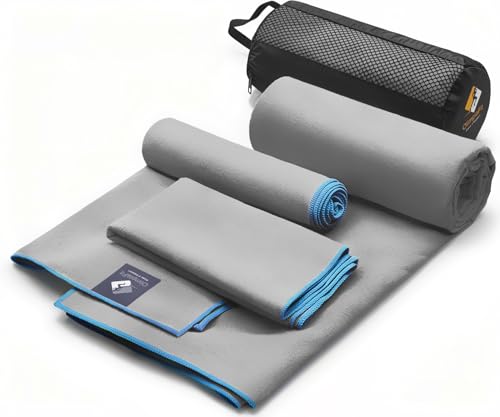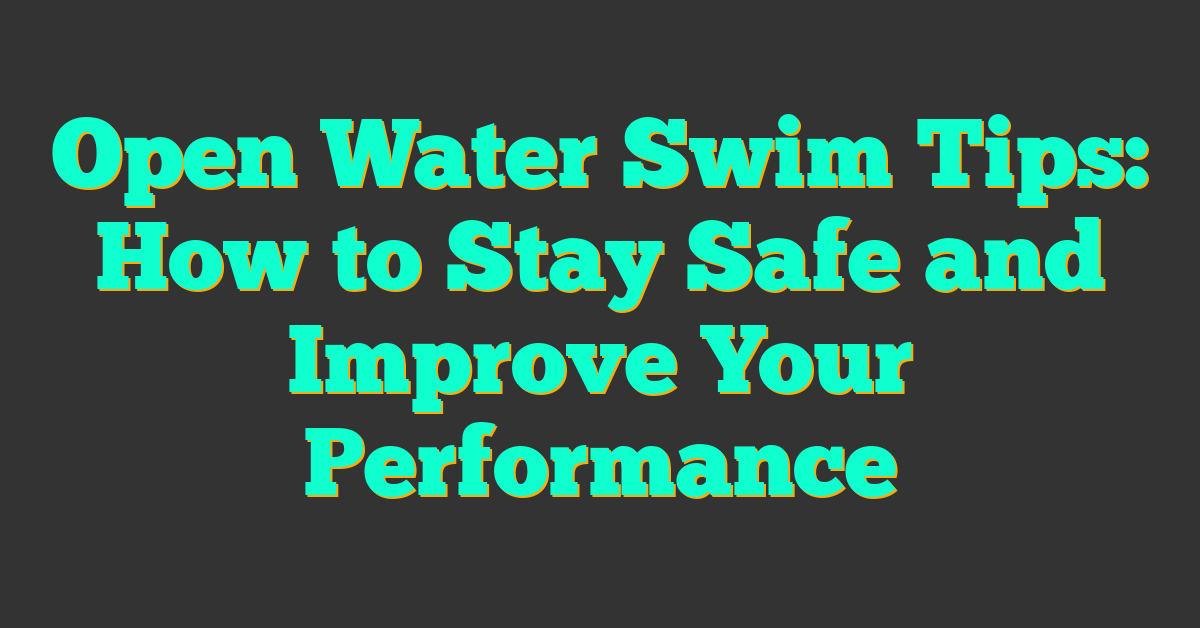Are triathlon bikes comfortable? This is a common question among both seasoned triathletes and beginners. Triathlon bikes are designed to be fast and efficient, but they also need to be comfortable enough for the rider to stay in the aero position for long periods of time. In this article, we will explore the comfort aspect of triathlon bikes and provide you with some tips on how to choose a comfortable triathlon bike.


When it comes to triathlon bikes, comfort is a critical factor. Spending hours in the aero position can be uncomfortable, especially if you are not used to it. However, a comfortable triathlon bike can make a huge difference in your performance and overall experience. In this article, we will cover everything you need to know about triathlon bike comfort, including the role of aerodynamics, bike geometry, materials, and components.
Key Takeaways:
- Triathlon bikes need to be both fast and comfortable to ride in the aero position for long periods of time.
- The role of aerodynamics, bike geometry, materials, and components all play a critical role in the comfort of a triathlon bike.
- Choosing a comfortable triathlon bike can make a significant difference in your performance and overall experience.
What are Triathlon Bikes
If you’re getting into triathlons, you may have heard of triathlon bikes, also known as tri bikes. Triathlon bikes are a specific type of bicycle designed for triathletes to use during the cycling portion of the race. These bikes are designed to be faster and more aerodynamic than traditional road bikes, which can give you an advantage during the race.
Triathlon bikes have several features that set them apart from other types of bicycles. One of the most noticeable features is the aerodynamic design. The frame is designed to be as streamlined as possible, which reduces wind resistance and makes it easier to maintain a fast speed. The handlebars on a triathlon bike are also designed to be aerodynamic, with a more narrow profile than traditional road bike handlebars.
Another feature of triathlon bikes is the geometry of the frame. Triathlon bike frames are designed to put you in a more forward-leaning position, which can be more comfortable during long rides. This position also helps to reduce wind resistance, which can help you maintain a faster speed.
Triathlon bikes also typically have a more aggressive gearing system than traditional road bikes. This means that the gears are designed to help you maintain a higher speed with less effort, which can be especially useful during the cycling portion of a triathlon.
Overall, triathlon bikes are an important piece of equipment for any serious triathlete. While they may not be the most comfortable type of bicycle, they are designed to help you maintain a faster speed during the cycling portion of the race, which can give you an advantage over your competitors.
Comfort and Triathlon Bikes
When it comes to triathlon bikes, comfort is not the first thing that comes to mind. Triathlon bikes are designed to be aerodynamic and lightweight, with the rider’s ability to exert maximum effort against the pedals being the top priority. However, that doesn’t mean that triathlon bikes are uncomfortable.
One of the most important factors that determine the comfort of a triathlon bike is the saddle. A good saddle should be supportive, but not too soft, and should provide enough padding to reduce the vibrations that can cause discomfort during long rides. Some triathlon bikes come with a split-nose saddle, which can help to reduce pressure on the perineum and improve blood flow to the area.
Another factor that can affect the comfort of a triathlon bike is the riding position. Triathlon bikes are designed to allow the rider to adopt a more aerodynamic position, which can put more pressure on the shoulders, neck, and lower back. However, with the right adjustments to the seat post and handlebars, you can find a comfortable riding position that allows you to maintain a good balance between aerodynamics and comfort.
It’s worth noting that triathlon bikes are not the only option for triathletes. Some athletes prefer to use road bikes or time trial bikes, which can offer a more comfortable riding position. However, these bikes may not be as aerodynamic as triathlon bikes, which can affect your speed and performance.
In summary, while triathlon bikes may not be the most comfortable option out there, they are designed to provide a balance between aerodynamics and comfort. By choosing the right saddle, making adjustments to the seat post and handlebars, and finding the right riding position, you can ensure that your triathlon bike is as comfortable as possible.
The Role of Aerodynamics
When it comes to triathlon bikes, aerodynamics plays a crucial role in determining how comfortable you will be during the ride. The more aerodynamic your bike is, the less drag you will experience, which translates into less effort needed to maintain your speed.
One of the most significant factors affecting aerodynamics is the shape of your bike frame, wheels, and helmet. These optimized shapes are more or less like tear-drops or airfoils that help claw back some more watts from the drag monster. The form-fitting, non-flapping clothing also helps reduce the area facing the airflow, which can significantly reduce drag.
Another important aspect of aerodynamics is the use of aero bars or clip-on aero bars. These bars allow you to ride in an aerodynamic position, which can reduce drag and save energy. The aerodynamic position involves lowering your body and extending your arms to reduce your frontal area. You can also use the aero-tuck position, which involves tucking your elbows in and lowering your head to reduce drag further.
Aerodynamic wheels are another component that can help improve your comfort on a triathlon bike. These wheels are designed to reduce drag and improve your overall speed. The aero-bar is another component that can help improve your aerodynamics. These bars allow you to position your hands in a way that reduces your frontal area and allows you to maintain a more aerodynamic position.
Finally, the use of aerosystem shaping technology can help improve your bike’s aerodynamics. This technology involves shaping the bike frame and components to reduce drag and improve airflow. By reducing drag, you can maintain your speed with less effort, which can help you stay comfortable during long rides.
Overall, the role of aerodynamics in triathlon bikes cannot be overstated. By optimizing your bike’s shape, components, and position, you can reduce drag and improve your speed and comfort. Incorporating aerodynamics into your bike setup can help you perform better and stay comfortable during long rides.
Understanding Bike Geometry
« Best Triathlon Wheels: Top Picks for Speed and Performance
How to Win a Triathlon: Tips and Strategies for Success »
When it comes to triathlon bikes, understanding bike geometry is crucial to ensuring a comfortable and efficient ride. The frame geometry of a bike determines how it fits and feels to the rider. The three main measurements that define a frame’s fit characteristics are stack height, reach, and seat tube angle.
The stack height is the vertical distance between the bottom bracket and the top of the head tube. The reach is the horizontal distance between the bottom bracket and head tube. And the seat tube angle determines the position of the saddle. These measurements are critical because they affect the fit of the bike and your body posture.
The bottom bracket is the part of the bike where the pedals attach, and it is also a critical component of the bike’s geometry. The position of the bottom bracket affects the bike’s stability and handling. A higher bottom bracket provides more clearance for obstacles, while a lower bottom bracket improves stability and cornering.
When choosing a triathlon bike, it’s essential to consider the fit range of the bike. The fit range refers to the range of rider heights that the bike is designed to fit comfortably. A bike with a narrow fit range may not be suitable for riders who fall outside that range.
In addition to the bike’s geometry, your body posture also plays a crucial role in your comfort on the bike. A triathlon or time trial bike requires a fundamental change in body posture compared to other styles of bikes. With the increase in aerodynamics comes a decrease in comfortability. However, with proper bike fit, you can achieve a comfortable and efficient riding position.
In summary, understanding bike geometry is critical to ensuring a comfortable and efficient ride on a triathlon bike. The frame geometry, bottom bracket position, fit range, and body posture all play a crucial role in your overall comfort on the bike. By choosing a bike with the right fit and geometry, you can achieve a comfortable and efficient riding position, allowing you to focus on your performance.
Materials and Construction

When it comes to triathlon bikes, the materials used in the construction of the frame are crucial. The frame is responsible for the overall stiffness, weight, and durability of the bike. The most common materials used in triathlon bike frames are carbon fiber, aluminum, and titanium.
Carbon fiber frames are the most popular choice among triathletes because they offer the best combination of strength, stiffness, and low weight. Carbon fiber frames are made by weaving together carbon fibers and then bonding them together with resin. This process creates a frame that is incredibly strong and stiff, yet very lightweight.
Aluminum frames are also a popular choice for triathlon bikes. Aluminum frames are less expensive than carbon fiber frames and are also very stiff. However, aluminum frames are heavier than carbon fiber frames, which can be a disadvantage in longer races.
The frame tubes of a triathlon bike are also an important consideration. The shape and size of the tubes can affect the aerodynamics of the bike, as well as the stiffness and weight. Triathlon bikes often have a steeper seat tube angle, pushing the hips forward on the ride and saving the hamstrings for the run.
In addition to the frame, the components used in the construction of the bike can also affect its comfort. For example, a bike with a good saddle and handlebars that are the correct size can make a big difference in how comfortable the bike is to ride.
Components and Features

When it comes to triathlon bikes, there are various components and features that can affect your comfort during the ride. Here are some of the most important ones to consider:
Geometry
The geometry of a triathlon bike is designed to be more aerodynamic than a standard road bike. This means the frame is longer and lower, which can put you in a more aggressive riding position. While this can improve your speed, it can also lead to discomfort if you’re not used to it. Make sure to test ride different bikes to find one with a geometry that suits your body type and riding style.
Disc Brakes
Disc brakes are becoming more popular on triathlon bikes due to their superior stopping power and modulation. This can be especially important in wet or hilly conditions. However, disc brakes can also add weight and complexity to the bike, so consider your priorities when choosing a bike.
Electronic Shifting
Electronic shifting systems like SRAM eTap and Shimano Di2 can provide smoother and more precise shifting than mechanical systems. This can make it easier to shift gears while riding, which can improve your comfort and performance. However, electronic systems can also be more expensive and require more maintenance.
Drivetrain Components
The drivetrain components on a triathlon bike can affect your comfort in several ways. Higher-end components like Shimano Ultegra and Dura-Ace can provide smoother and more precise shifting, while lower-end components like Shimano 105 can be less expensive but may not perform as well. Make sure to choose components that match your budget and riding goals.
Hydration System
Staying hydrated is crucial during a triathlon, so many triathlon bikes come with built-in hydration systems. These can include water bottle cages, hydration bladders, and integrated hydration systems in the frame. Make sure to choose a system that is easy to use and refill, and that won’t interfere with your riding position or comfort.
Overall, there are many components and features to consider when choosing a triathlon bike that is comfortable for you. By taking the time to research and test ride different bikes, you can find one that meets your needs and helps you perform at your best.
Triathlon Bikes Brands and Models

When it comes to triathlon bikes, there are many brands and models to choose from. Some of the most popular brands include Cervelo, Quintana Roo, Ventum, Dimond, A2 Bikes, and Giant. Each brand has its own unique features and benefits, so it’s important to do your research and find the one that’s right for you.
Cervelo is a well-known brand in the triathlon community, and their bikes are known for their speed and aerodynamics. The P5X is one of their most popular models, and it’s designed to be the ultimate triathlon bike. It features a fully integrated design, with everything from the brakes to the storage compartments built into the frame.
Quintana Roo is another popular brand, and their PRfour model is a great option for those looking for a high-performance bike at a reasonable price. It features a carbon fiber frame, which helps to reduce weight and increase stiffness, and it also has an aerodynamic design that helps to reduce drag.
Ventum is a newer brand in the triathlon world, but they’ve quickly gained a reputation for their innovative designs. Their Ventum One model is one of the most aerodynamic bikes on the market, thanks to its unique frame design. It also features an integrated hydration system, which helps to reduce drag even further.
The Dimond brand is known for their high-quality carbon fiber frames, and their bikes are designed to be both fast and comfortable. The Dimond Marquise is their top-of-the-line model, and it features a unique beam design that helps to reduce drag and increase stiffness.
A2 Bikes is a smaller brand, but their SP1.2 model is a great option for those on a budget. It features a carbon fiber frame, which helps to reduce weight and increase stiffness, and it also has an aerodynamic design that helps to reduce drag.
Finally, the Giant Trinity Advanced is a popular option for those looking for a high-performance bike at a reasonable price. It features a carbon fiber frame, which helps to reduce weight and increase stiffness, and it also has an aerodynamic design that helps to reduce drag.
No matter which brand or model you choose, it’s important to find a triathlon bike that fits you well and meets your specific needs. Whether you’re a beginner or a seasoned pro, there’s a triathlon bike out there that’s perfect for you.
Price and Value

When it comes to purchasing a triathlon bike, the price tag is often the first thing that comes to mind. Depending on the brand, design, materials, and performance, each bike is priced at a different value. Generally, the price of triathlon bikes starts as low as $1,700 and goes up to $12,000 per bike. However, you can find a good entry-level triathlon bike at the $3,000 price point.
The entry-level triathlon bikes are a great option for beginners who are just starting out with the sport. These bikes offer a good balance between performance and value. They are often made of aluminum and come with basic components. However, they are still capable of delivering all-out race performance.
Mid-range triathlon bikes are priced between $3,000 and $6,000. These bikes are a step up from entry-level bikes and come with better components and materials. They are often made of carbon fiber, which makes them lighter and stiffer. These bikes are a good option for intermediate triathletes who are looking to improve their performance.
High-performance triathlon bikes are priced above $6,000 and offer the best performance and quality. These bikes are made of the highest quality carbon fiber and come with the best components. They are designed for professional triathletes who are looking to compete at the highest level.
When it comes to purchasing a triathlon bike, it’s important to consider your budget and your needs. While high-performance bikes may offer the best performance, they may not be necessary for everyone. An entry-level or mid-range bike may be a better option for those who are just starting out or who are not looking to compete at the highest level.
In conclusion, the price and value of a triathlon bike is an important factor to consider when making a purchase. While there are many options available at different price points, it’s important to choose a bike that meets your needs and fits your budget.
Performance and Efficiency
When it comes to triathlon bikes, performance and efficiency are two of the most important factors to consider. Triathlon bikes are designed to be faster and more efficient than traditional road bikes, which is why they are the preferred choice for triathletes.
One of the main reasons why triathlon bikes are faster and more efficient is because of their aerodynamic design. Triathlon bikes are designed to be as streamlined as possible, which reduces wind resistance and allows you to ride faster with less effort. The aero-bars, frame tubes, and wheel design all contribute to the increased performance of a triathlon bike.
In addition to their aerodynamic design, triathlon bikes are also designed to be stiff and responsive. This stiffness allows for better power transfer from your legs to the pedals, which means you can go faster with less effort. The handling of a triathlon bike is also designed to be precise and tight, which allows you to navigate corners and turns with ease.
Overall, triathlon bikes are designed to be the ultimate performance machine for triathletes. They are faster, more efficient, and more responsive than traditional road bikes, which is why they are the preferred choice for serious triathletes. If you are looking to take your triathlon performance to the next level, investing in a triathlon bike is a great way to achieve your goals.
The Role of Nutrition and Hydration
When it comes to triathlon racing, nutrition and hydration are key to your success on the day. Proper nutrition and hydration can help you maintain your energy levels, prevent cramping, and keep you focused on your goals.
Nutrition
As a triathlete, you need to fuel your body with the right nutrients to perform at your best. Carbohydrates are the backbone of a triathlete’s diet, as they are the main source of energy. You should aim to consume complex carbohydrates such as whole grains, fruits, and vegetables. These foods provide a steady source of energy and help you avoid the energy crashes that come with consuming simple sugars.
Protein is also important for triathletes, as it helps repair and build muscle tissue. Good sources of protein include lean meats, fish, eggs, and legumes.
Hydration
Proper hydration is essential for all athletes, but it’s especially important for triathletes who are competing in endurance events. Dehydration can lead to fatigue, cramping, and decreased performance.
You should aim to drink water and electrolyte drinks regularly during training and on race day. Electrolytes are minerals that help regulate your body’s fluid balance and are lost through sweat during exercise. You can replenish electrolytes by drinking sports drinks or eating foods such as bananas, avocados, and nuts.
It’s also important to adjust your hydration strategy based on the weather conditions. Hot and humid conditions will require more fluid intake than cooler temperatures.
In conclusion, proper nutrition and hydration are critical components of triathlon performance. By fueling your body with the right nutrients and staying hydrated, you can perform at your best and achieve your goals.
Frequently Asked Questions
How can I make my triathlon bike more comfortable?
While triathlon bikes are not designed for comfort, there are some things you can do to make your ride more comfortable. First, make sure your bike is properly fitted to your body. This will help ensure that you are in the most efficient and comfortable position possible. Additionally, investing in a high-quality saddle and padded shorts can help reduce discomfort during longer rides. Finally, consider adding some accessories like armrest pads or aerobar pads to help reduce pressure on your arms and elbows.
What are some common discomforts associated with triathlon bikes?
Some common discomforts associated with triathlon bikes include saddle soreness, neck and shoulder pain, and hand numbness. These discomforts can be caused by a variety of factors, including an improper bike fit, poor posture, and a lack of padding on the saddle or handlebars.
What features should I look for in a comfortable triathlon bike?
When shopping for a comfortable triathlon bike, look for features that will help reduce discomfort during long rides. This may include a carbon fiber frame, which can help absorb some of the road vibrations, as well as a comfortable saddle with plenty of padding. Additionally, consider investing in a bike with adjustable handlebars or aerobars, which will allow you to find the most comfortable riding position for your body.
Can a professional bike fitting improve my comfort on a triathlon bike?
Yes, a professional bike fitting can greatly improve your comfort on a triathlon bike. A professional bike fitter will take precise measurements of your body and adjust your bike accordingly to ensure that you are in the most efficient and comfortable position possible. This can help reduce discomfort and improve your overall performance on the bike.
Are there any specific types of saddles that are more comfortable for triathlon bikes?
There are a variety of saddle types that can be comfortable for triathlon bikes, depending on your personal preferences and riding style. Some popular options include split-nose saddles, which can help reduce pressure on the perineum, and saddles with a cutout in the center, which can help reduce pressure on the tailbone.
What are some tips for staying comfortable on a long-distance triathlon bike ride?
To stay comfortable on a long-distance triathlon bike ride, make sure you are properly hydrated and fueled throughout the ride. Additionally, take breaks every hour or so to stretch and adjust your position. Finally, make sure your bike is properly fitted to your body and invest in high-quality padded shorts and a comfortable saddle to help reduce discomfort.










